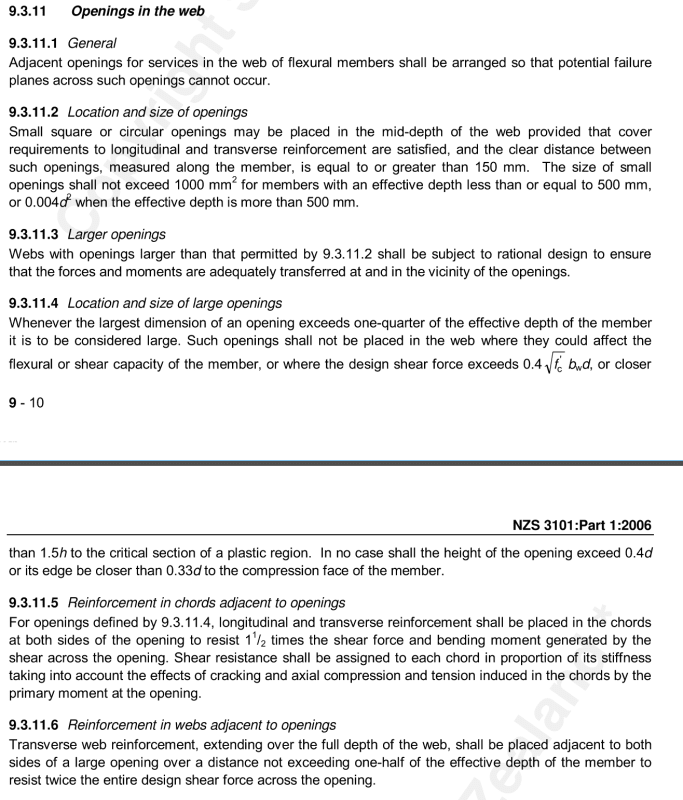For a building refurbishment project ,it is required to provide 6”x 6” opening along RC beams of sectional size 9”x18”.
The existing building (03 storied) is about 25 years old and for the concrete structure, Grade 25 concrete has been used. According to the available structural drawings, the beams and the slab is being adequately reinforced. The span of the longest beams are is 21’-0” & 13’-9”
The previous use of the building is for a hotel and it will be refurbished for the same functional use.
I proposed the following methodology for the process of making 6”x6” openings in RC beams
1. After fixing proper steel props & other safety measures, 1/4 L of from the supporting column (Point of contraflexure region),a 6”x 6” opening on the beam shall be done using manual tools
2. The opening to be made with an extra 20 mm and a square sleeve fabricated by welding 8mm thick steel plates to be inserted & fixed in the opening by using high strength concrete grout.
( this arrangement will compensate for the loss of shear strength at the RC beam opening -but I don’t have a calculation to prove this)
I need your comments & opinions please
The existing building (03 storied) is about 25 years old and for the concrete structure, Grade 25 concrete has been used. According to the available structural drawings, the beams and the slab is being adequately reinforced. The span of the longest beams are is 21’-0” & 13’-9”
The previous use of the building is for a hotel and it will be refurbished for the same functional use.
I proposed the following methodology for the process of making 6”x6” openings in RC beams
1. After fixing proper steel props & other safety measures, 1/4 L of from the supporting column (Point of contraflexure region),a 6”x 6” opening on the beam shall be done using manual tools
2. The opening to be made with an extra 20 mm and a square sleeve fabricated by welding 8mm thick steel plates to be inserted & fixed in the opening by using high strength concrete grout.
( this arrangement will compensate for the loss of shear strength at the RC beam opening -but I don’t have a calculation to prove this)
I need your comments & opinions please


![[pipe] [pipe] [pipe]](/data/assets/smilies/pipe.gif)
![[ponder] [ponder] [ponder]](/data/assets/smilies/ponder.gif)